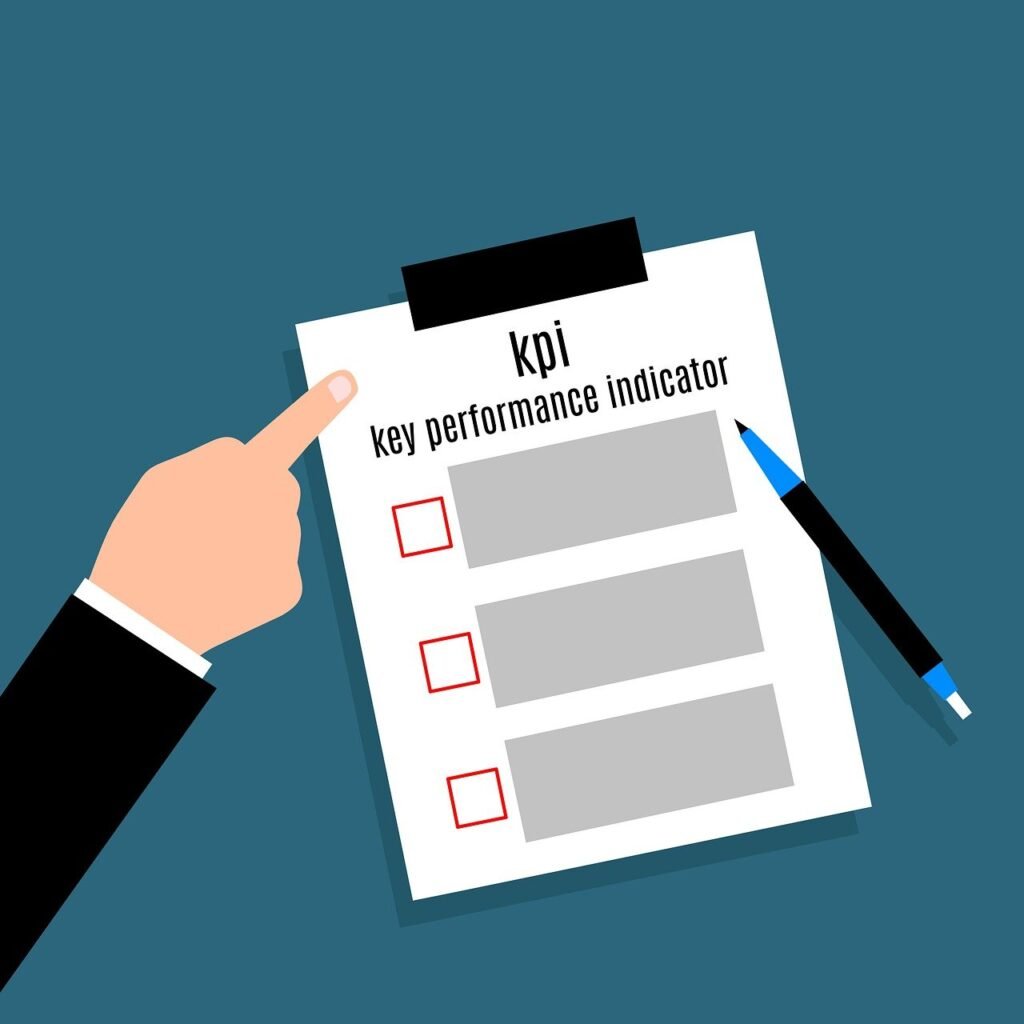This Article has been revised, edited and added to, by Poulomi Chakraborty.
- The Affiliate Marketing Ecosystem
- The Symbiotic Relationship
- The New Marketplace: A Community-Centric Model
- Integrating Community Insights into Strategy
- Enhancing Customer Loyalty Through Community
- Leveraging User-Generated Content for Authenticity
- Facilitating Peer-to-Peer Recommendations
- Building Trust Through Transparent Communication
- Creating a Supportive Environment
- Utilizing Data-Driven Community Management
- Fostering Long-Term Relationships
- Expanding Community Reach
- Measuring Community Impact on Affiliate Marketing
- Building the Foundations of Your Community
- Understanding Your Audience
- Establishing Your Online Hub
- Creating Value Beyond Products
- Crafting a Clear Community Vision
- Identifying Your Target Audience
- Establishing a Strong Brand Identity
- Choosing the Right Platforms
- Creating Engaging and Valuable Content
- Fostering an Inclusive and Supportive Environment
- Implementing Effective Moderation
- Building Relationships and Trust
- Encouraging Member Participation
- Measuring Community Health and Growth
- Engagement Strategies to Foster a Thriving Community
- Encourage Interaction Through Content
- Host Live Events
- Create Exclusive Experiences
- Developing a Content Calendar for Consistent Interaction
- Personalized Engagement Tactics
- Facilitating Peer-to-Peer Interactions
- Hosting Regular Challenges and Contests
- Utilizing Gamification Techniques
- Leveraging Live Streaming for Real-Time Interaction
- Implementing Member-Driven Content Initiatives
- Nurturing Micro-Communities and Sub-Groups
- Encouraging Feedback and Iterative Improvement
- Cultivating a Culture of Inclusivity and Respect
- Utilizing Community Feedback for Affiliate Success
- Collect and Act on Feedback
- Implement User-Generated Content
- Creating a Feedback Loop
- Analyzing Feedback for Strategic Insights
- Adapting Affiliate Campaigns Based on Feedback
- Engaging in Transparent Communication
- Implementing User-Generated Content
- Iterative Improvement and Testing
- Empowering Community Advocates
- Building a Feedback-Driven Culture
- Leveraging Technology for Feedback Management
- Leveraging Community for Affiliate Promotions
- Personalize Your Promotions
- Partner with Community Members
- Building Trust-Based Promotions
- Crafting Personalized Marketing Messages
- Integrating Affiliate Links Seamlessly
- Hosting Exclusive Community Events
- Collaborating with Influential Community Members
- Utilizing Storytelling Techniques
- Creating Value-Driven Content
- Implementing a Feedback Loop for Promotions
- Leveraging Seasonal and Timely Promotions
- Encouraging Social Sharing and Advocacy
- Measuring the Impact of Community on Affiliate Marketing
- Establishing Key Performance Indicators (KPIs)
- Utilizing Advanced Analytics Tools
- Conducting A/B Testing
- Tracking Engagement Metrics
- Analyzing Conversion Funnels
- Evaluating the ROI of Community Initiatives
- Leveraging Sentiment Analysis
- Conducting Member Surveys
- Benchmarking Against Competitors
- Reporting and Iteration
- Final Thoughts: The Future of Community in Affiliate Marketing
Welcome to the pulse of the modern marketing world, where affiliate marketing isn’t just a lone wolf’s game. Here, we explore the dynamic role community building plays in amplifying the results of your affiliate marketing campaigns. Whether you’re a fresh face in the marketing scene or a seasoned affiliate marketer, the insights here are designed to bolster your efforts with the power of community.
The Affiliate Marketing Ecosystem

In the realm of digital marketing, affiliate marketing stands out as a performance-based approach that thrives on relationships — relationships between brands, affiliates, and most importantly, the community of customers. But what happens when you introduce the concept of community building into this mix?
Community building transforms the traditional affiliate marketing formula by adding a new dimension where engagement, trust, and shared value reign supreme. It’s about creating a space where your audience doesn’t just see a product link but feels part of a collective journey, one where their needs and aspirations are understood and catered to.
By weaving community building into your affiliate marketing efforts, you don’t just sell — you connect, engage, and grow with your audience. Let’s dive into how community building serves as a catalyst for affiliate marketing success and how you can harness its power effectively.
The Symbiotic Relationship
Think of affiliate marketing and community building as two dancers in a tango — each step in sync, each move complementing the other. While affiliate marketing brings the products and the revenue model, community building brings the human touch that transforms cold transactions into meaningful interactions.
The New Marketplace: A Community-Centric Model
The marketplace has evolved. It’s no longer a place where transactions happen in silence. Today’s marketplace is a bustling community where conversations lead to conversions. And in this community-centric model, the role of an affiliate marketer is akin to that of a community leader.
Integrating Community Insights into Strategy
One of the fundamental advantages of community building is the wealth of insights you can gather from your audience. Engaging directly with your community allows you to understand their needs, preferences, and pain points more intimately. Use these insights to refine your affiliate marketing strategy.
For instance, by listening to community discussions, you can identify trending topics and products that resonate with your audience. This real-time feedback loop enables you to create more targeted and effective affiliate campaigns.
Enhancing Customer Loyalty Through Community
A strong community fosters loyalty, which is essential for the success of any affiliate marketing effort. When customers feel part of a community, they are more likely to trust recommendations and return for future purchases. Build loyalty by consistently providing value through informative content, exclusive offers, and engaging interactions.
Encourage community members to share their success stories and product experiences, creating a sense of belonging and trust. This loyal customer base can become advocates for your brand, amplifying your affiliate marketing reach through word-of-mouth and social sharing.
Leveraging User-Generated Content for Authenticity
User-generated content (UGC) is a powerful tool in affiliate marketing, as it brings authenticity and relatability to your promotions. Encourage your community members to create and share content featuring the products you promote.
This can include reviews, unboxing videos, tutorials, and before-and-after photos. Highlighting UGC on your platforms not only showcases real-life applications and benefits of the products but also builds trust with potential customers.
Authentic content from fellow consumers often carries more weight than traditional advertising, making it a crucial component of your affiliate marketing strategy.
Facilitating Peer-to-Peer Recommendations
Within a community, peer-to-peer recommendations can be incredibly influential. Create an environment where members feel comfortable sharing their product experiences and recommendations.
Facilitate discussions and provide platforms for these interactions, such as forums, social media groups, or dedicated community sections on your website. Encourage satisfied customers to refer products to friends and family, leveraging their positive experiences to drive new conversions.
This organic promotion method can significantly enhance the credibility and reach of your affiliate marketing efforts.
Building Trust Through Transparent Communication
Transparency is a cornerstone of building trust within your community. Clearly communicate your affiliate relationships and the value they bring to the community. Explain how affiliate links work, the benefits of supporting the community through these links, and how you select the products you promote.
Regularly update your community on your affiliate marketing efforts, including successes and lessons learned. This openness fosters a sense of trust and integrity, making your audience more likely to engage with and support your affiliate promotions.
Creating a Supportive Environment
A thriving community is one where members feel supported and valued. Provide exceptional customer service and be responsive to inquiries and feedback. Address concerns promptly and constructively, showing your commitment to the well-being of your community members.
Offer educational resources, such as guides and tutorials, to help members make informed decisions about the products you promote. By creating a supportive environment, you enhance the overall experience of your community, making them more likely to trust and act on your affiliate recommendations.
Utilizing Data-Driven Community Management
Effective community management relies on data-driven insights. Use analytics tools to monitor engagement levels, track community growth, and identify key areas for improvement. Analyze the performance of different types of content and interactions to determine what resonates most with your audience.
Use these insights to refine your community management strategies, ensuring that you continue to meet the evolving needs of your members. Data-driven decision-making helps you optimize your affiliate marketing efforts and maximize the impact of your community-building initiatives.
Fostering Long-Term Relationships
Building a community is a long-term commitment that requires ongoing effort and dedication. Focus on fostering long-term relationships with your community members by consistently providing value and engaging with them on a personal level.
Celebrate milestones and achievements within the community, recognizing and rewarding loyal members. Develop initiatives that encourage continuous interaction and growth, such as loyalty programs, challenges, and collaborative projects.
By prioritizing long-term relationships, you create a stable and supportive foundation for your affiliate marketing efforts.
Expanding Community Reach
To enhance the effectiveness of your affiliate marketing, consider expanding the reach of your community. Explore new platforms and channels where your target audience is active. Collaborate with influencers and other communities to attract new members and increase your visibility.
Host events, both online and offline, to bring your community together and attract new participants. Expanding your community reach not only broadens your potential audience but also introduces fresh perspectives and ideas, enriching the overall community experience.
Measuring Community Impact on Affiliate Marketing
To truly understand the value of community in your affiliate marketing efforts, it’s essential to measure its impact. Track key performance indicators (KPIs) such as engagement rates, conversion rates, and customer retention.
Analyze the correlation between community interactions and affiliate sales to identify successful strategies and areas for improvement. Regularly review and adjust your community-building tactics based on these insights, ensuring that you continue to optimize your efforts and achieve your affiliate marketing goals.
Building the Foundations of Your Community

The journey begins with laying down the first stone of your community. This is where you define what your community stands for and who it serves.
Understanding Your Audience
Before you can build a community, you need to understand who you are building it for. What are their interests? What problems are they looking to solve? When you understand your audience at a granular level, you can create a community that resonates with them.
Establishing Your Online Hub
Your community needs a home, whether it’s a blog, social media group, or forum. This hub is where your audience will gather, share experiences, and connect with each other. Ensure it’s accessible, welcoming, and reflective of your community’s values.
Creating Value Beyond Products
Community building in affiliate marketing isn’t just about promoting products. It’s about creating value in the form of content, support, and engagement. Your goal is to become a resource that your community trusts and turns to, not just another billboard on their digital highway.
Crafting a Clear Community Vision
Creating a clear vision for your community is the first step in building a strong foundation. This vision should articulate the purpose of your community, the values it upholds, and the long-term goals you aim to achieve.
A well-defined vision guides your actions and decisions, ensuring that all community-building efforts align with your overarching mission. For startup founders, this means considering how your community aligns with your brand’s goals and how it can provide value to both your audience and your business.
Identifying Your Target Audience
Understanding your target audience is crucial in building a community that resonates with them. Conduct market research to identify the demographics, preferences, and behaviors of your potential community members. Create detailed audience personas to represent different segments within your community.
This understanding allows you to tailor your messaging, content, and engagement strategies to meet the specific needs and interests of your audience. Knowing who your audience is helps in creating a community that feels personalized and relevant to its members.
Establishing a Strong Brand Identity
Your community should have a distinct and cohesive brand identity that reflects its values and purpose. This includes creating a recognizable logo, a consistent color scheme, and a unique voice and tone.
A strong brand identity helps attract like-minded individuals who resonate with your community’s ethos. It also provides a sense of belonging and pride among members, reinforcing their connection to the community. Ensure that all visual and textual elements consistently reflect this identity across all platforms and interactions.
Choosing the Right Platforms
Selecting the appropriate platforms for your community is essential for its success. Consider where your target audience is most active and what type of engagement you want to foster.
Social media platforms like Facebook and Instagram are great for visual content and casual interaction, while forums and specialized platforms like Reddit or Discord offer more in-depth discussions. A blog can serve as a central hub for longer-form content and updates. The key is to choose platforms that align with your community’s needs and preferences, providing a seamless and engaging experience.
Creating Engaging and Valuable Content
Content is the cornerstone of any thriving community. Develop a content strategy that provides value to your members through informative, entertaining, and engaging material.
This could include blog posts, videos, podcasts, webinars, and interactive content like polls and quizzes. Ensure that your content addresses the interests and pain points of your audience, positioning your community as a valuable resource. Regularly update your content to keep it fresh and relevant, encouraging members to return and stay engaged.
Fostering an Inclusive and Supportive Environment
An inclusive and supportive environment is critical for community growth and sustainability. Encourage open and respectful communication, ensuring that all members feel welcomed and valued. Implement clear guidelines and policies to maintain a positive atmosphere and address any issues promptly.
Promote diversity and inclusion by highlighting different perspectives and experiences within your community. A supportive environment not only enhances member satisfaction but also fosters loyalty and long-term engagement.
Implementing Effective Moderation
Effective moderation is essential to maintaining the integrity and quality of your community. Assign dedicated moderators who can oversee interactions, enforce community guidelines, and facilitate discussions.
Moderators should be approachable, fair, and knowledgeable about the community’s values and objectives. Regularly train and update your moderation team on best practices and emerging issues. Effective moderation ensures that your community remains a safe and enjoyable space for all members.
Building Relationships and Trust
Building strong relationships and trust with your community members is a gradual process that requires consistency and authenticity. Engage with your audience by responding to comments, participating in discussions, and showing appreciation for their contributions.
Share behind-the-scenes insights and personal stories to humanize your brand and build a deeper connection. Trust is earned through transparency, reliability, and genuine engagement, which are vital for fostering a loyal and active community.
Encouraging Member Participation
Active participation from members is crucial for a vibrant community. Create opportunities for members to contribute through user-generated content, feedback sessions, and collaborative projects. Recognize and reward active participants to motivate continued involvement.
Encourage members to share their experiences, ideas, and expertise, making them feel like integral parts of the community. Facilitating member participation not only enriches the community experience but also provides valuable insights and diverse perspectives.
Measuring Community Health and Growth
Regularly assessing the health and growth of your community is essential for its long-term success. Track key metrics such as engagement rates, member growth, content performance, and overall satisfaction. Use surveys and feedback forms to gather direct input from your community members.
Analyze this data to identify trends, strengths, and areas for improvement. Regularly review and adjust your strategies based on these insights to ensure that your community continues to thrive and evolve.
Engagement Strategies to Foster a Thriving Community

Once your foundation is set, it’s time to get into the heart of community building – engagement. Engagement is the lifeblood of any community. It’s about sparking conversations, encouraging sharing, and building relationships that extend beyond the screen.
Encourage Interaction Through Content
Creating content that prompts action is crucial. Whether it’s a thought-provoking blog post, an interactive poll on social media, or an inspiring video, your content should encourage your community members to interact, not just with you, but with one another.
Actionable Tip:
Ask open-ended questions in your posts to invite comments and discussions. This not only boosts engagement but also provides invaluable insights into your community’s preferences.
Host Live Events
Live events, such as webinars, Q&A sessions, and online workshops, add a personal touch to your community interactions. They offer real-time engagement and help solidify your role as a community leader.
Actionable Tip:
Regularly schedule live sessions and vary the formats to keep your community interested and active. Always conclude with a call-to-action that encourages further interaction.
Create Exclusive Experiences
Members of any community love to feel special. Exclusive offers, insider tips, or early access to content can make community members feel valued and increase their loyalty to your community.
Actionable Tip:
Set up a members-only section on your website or a VIP group on a social platform where you can share exclusive affiliate deals or content.
Developing a Content Calendar for Consistent Interaction
A well-structured content calendar is crucial for maintaining consistent interaction within your community. Plan out content themes and posting schedules to ensure a steady flow of engaging material.
This approach helps you stay organized and ensures that your community is continually engaged with fresh content. Include a mix of content types such as informative articles, interactive posts, and multimedia content to keep the community engaged and cater to different preferences.
Personalized Engagement Tactics
Personalization can significantly enhance community engagement. Address community members by their names, recognize their contributions, and tailor your interactions based on their preferences and behaviors.
For instance, if a member frequently engages with skincare content, provide personalized recommendations or exclusive content related to skincare. This level of personalized attention makes members feel valued and fosters a deeper connection with your community.
Facilitating Peer-to-Peer Interactions
Encouraging peer-to-peer interactions can greatly enhance the sense of community. Create spaces where members can share their experiences, ask questions, and provide support to one another.
This could be through dedicated forums, discussion threads, or social media groups. Highlighting member-generated content and discussions can also motivate others to participate actively. Facilitating these interactions helps build a supportive and collaborative community environment.
Hosting Regular Challenges and Contests
Challenges and contests are effective ways to boost engagement and excitement within your community. Design challenges that are relevant to your niche and encourage participation. For example, a beauty community might host a makeup look challenge or a skincare routine contest.
Ensure that these events are inclusive and offer appealing incentives such as product giveaways or exclusive discounts. Regularly hosting such activities keeps the community dynamic and encourages ongoing participation.
Utilizing Gamification Techniques
Gamification can make community engagement more enjoyable and rewarding. Implement elements like badges, points, and leaderboards to recognize and reward active participation.
For instance, members could earn points for contributing to discussions, sharing content, or participating in challenges. These points can then be redeemed for rewards, creating a fun and motivating environment. Gamification not only increases engagement but also fosters a sense of accomplishment and loyalty among community members.
Leveraging Live Streaming for Real-Time Interaction
Live streaming offers an unparalleled opportunity for real-time interaction and engagement. Use live sessions to host Q&A sessions, product demonstrations, or interviews with industry experts. Promote these sessions in advance to build anticipation and encourage maximum participation.
During the live stream, actively engage with viewers by responding to their comments and questions. The immediacy and personal touch of live streaming can significantly enhance community engagement and create memorable experiences.
Implementing Member-Driven Content Initiatives
Empower your community members by giving them a platform to share their own content. This could include guest blog posts, member spotlights, or collaborative projects.
Recognizing and featuring member-driven content not only diversifies your content offerings but also strengthens the sense of ownership and belonging within the community. Encourage members to share their unique perspectives and experiences, creating a richer and more vibrant community.
Nurturing Micro-Communities and Sub-Groups
As your community grows, consider nurturing micro-communities or sub-groups focused on specific interests or topics. These smaller groups can provide a more intimate and focused environment for discussions.
For example, within a larger beauty community, you might have sub-groups dedicated to skincare, makeup, or sustainable beauty. Facilitating these micro-communities helps cater to diverse interests and fosters deeper connections among members with shared passions.
Encouraging Feedback and Iterative Improvement
Regularly solicit feedback from your community to understand their needs and preferences. Use surveys, polls, and open-ended questions to gather insights. Act on this feedback to make iterative improvements to your community engagement strategies.
Communicate the changes you make based on member feedback, showing that you value their input and are committed to continuously enhancing their experience. This iterative approach ensures that your community remains relevant and responsive to its members’ evolving needs.
Cultivating a Culture of Inclusivity and Respect
A thriving community is built on a foundation of inclusivity and respect. Promote a culture where all members feel welcome and valued, regardless of their background or level of expertise.
Establish clear community guidelines that encourage respectful and constructive interactions. Address any issues promptly and fairly to maintain a positive atmosphere. Cultivating this culture not only enhances engagement but also builds a loyal and supportive community that stands the test of time.

Related: Check out our free SEO suite

Utilizing Community Feedback for Affiliate Success
The feedback you receive from your community is a goldmine of information that can help you refine your affiliate marketing strategies. It’s about listening, adapting, and serving your community better.
Collect and Act on Feedback
Regularly solicit feedback from your community on the affiliate products you promote and the content you create. This not only helps you tailor your offerings to their needs but also shows that you value their opinions.
Actionable Tip:
Create surveys or feedback forms and incentivize participation with a small giveaway or exclusive content.
Implement User-Generated Content
There’s no better endorsement than your own community showcasing how they use and benefit from the products you’re promoting. User-generated content is authentic and relatable, making it a powerful tool for affiliate marketers.
Actionable Tip:
Encourage your community members to share their experiences with products and feature this content prominently on your platforms.
Creating a Feedback Loop
Establishing a continuous feedback loop is essential for leveraging community insights effectively. Encourage your community members to provide feedback regularly through various channels such as surveys, comment sections, direct messages, and social media interactions.
Make it easy for them to share their thoughts and experiences by creating user-friendly feedback forms and actively soliciting their opinions. Regularly review and analyze this feedback to identify trends, preferences, and areas for improvement.
A robust feedback loop ensures that you stay attuned to your community’s needs and can make informed decisions to enhance your affiliate marketing efforts.
Analyzing Feedback for Strategic Insights
Collecting feedback is only the first step; analyzing it to extract actionable insights is where the real value lies. Use qualitative and quantitative methods to evaluate the feedback you receive. Look for common themes and recurring suggestions that indicate broader trends within your community.
Quantitative data, such as survey results, can provide measurable insights into customer satisfaction and preferences. Combine these findings with qualitative insights from open-ended responses to develop a comprehensive understanding of your community’s needs and desires.
This analysis enables you to make strategic adjustments to your affiliate marketing campaigns based on real user data.
Adapting Affiliate Campaigns Based on Feedback
Use the insights gained from community feedback to refine and adapt your affiliate marketing campaigns. If your community expresses a preference for certain types of products or content, tailor your promotions to align with these interests.
For instance, if feedback indicates a high demand for eco-friendly beauty products, prioritize partnerships with brands that offer sustainable options. Regularly update your content and promotional strategies to reflect the evolving preferences of your community. Adapting your campaigns based on feedback not only enhances their relevance but also demonstrates that you value and act on your community’s input.
Engaging in Transparent Communication
Transparency in how you handle and respond to feedback is crucial for building trust and credibility. Keep your community informed about how their feedback is being used to improve your affiliate marketing efforts.
Share updates and changes that have been implemented based on their suggestions, and explain the rationale behind these decisions. This transparency fosters a sense of involvement and ownership among community members, encouraging them to continue providing valuable feedback. Regular communication about the impact of their feedback reinforces their importance in shaping your affiliate marketing strategy.
Implementing User-Generated Content
User-generated content (UGC) derived from community feedback can be a powerful tool for affiliate marketing. Encourage your community to share their own reviews, testimonials, and experiences with the products you promote.
Feature this content prominently on your platforms, showcasing real-life applications and benefits. UGC not only provides authentic endorsements but also helps build a sense of community and trust. By leveraging UGC, you can create more relatable and persuasive affiliate marketing content that resonates with potential customers.
Iterative Improvement and Testing
Adopting an iterative approach to your affiliate marketing strategy allows you to continuously refine and optimize your efforts based on community feedback. Implement changes in small increments and test their effectiveness before rolling them out more broadly.
Use A/B testing to compare different versions of your campaigns and identify what resonates best with your audience. Regularly review performance metrics and gather additional feedback to guide further improvements.
This iterative process ensures that your affiliate marketing strategy remains dynamic and responsive to the needs of your community.
Empowering Community Advocates
Identify and empower community members who consistently provide valuable feedback and engage actively with your content. These individuals can become powerful advocates for your brand and affiliate products.
Offer them exclusive opportunities, such as early access to new products, special discounts, or the chance to participate in beta testing. Encourage them to share their insights and experiences with the broader community, amplifying their influence.
Empowered advocates can help spread positive word-of-mouth and drive higher engagement and conversions within your affiliate marketing campaigns.
Building a Feedback-Driven Culture
Cultivating a feedback-driven culture within your community ensures that members feel valued and heard. Regularly highlight and celebrate instances where community feedback has led to significant improvements or successful campaigns.
Create dedicated spaces for feedback discussions and encourage open dialogue. Recognize and reward members who contribute valuable insights, fostering a sense of appreciation and involvement.
A feedback-driven culture not only enhances your affiliate marketing efforts but also strengthens the overall sense of community and loyalty among members.
Leveraging Technology for Feedback Management
Utilize advanced technology and tools to streamline feedback collection and analysis. Customer relationship management (CRM) systems, social listening tools, and analytics platforms can help you manage and interpret large volumes of feedback efficiently.
Automate the process of gathering and categorizing feedback to ensure no valuable insights are overlooked. Use sentiment analysis to gauge the overall mood and satisfaction of your community.
Leveraging technology enhances your ability to respond quickly and accurately to community needs, driving more effective affiliate marketing strategies.
Leveraging Community for Affiliate Promotions

Your community is ready and waiting, but how do you turn that readiness into action? It’s time to leverage the trust and rapport you’ve built to enhance your affiliate marketing efforts.
Personalize Your Promotions
Use the insights you’ve gained from your community to personalize your affiliate promotions. Tailoring your message to the specific needs and desires of your audience increases relevance and conversion potential.
Actionable Tip:
Segment your email list based on interests and send targeted promotions that resonate with each group.
Partner with Community Members
Collaborating with active community members for affiliate promotions can amplify your reach and lend authenticity to your marketing efforts. These partnerships can take the form of co-created content, joint live events, or affiliate challenges.
Actionable Tip:
Identify key influencers within your community and collaborate on campaigns that play to their strengths and appeal to your audience.
Building Trust-Based Promotions
Trust is the cornerstone of effective affiliate marketing, especially within a community. When you have a community that trusts your recommendations, affiliate promotions become more impactful. Start by ensuring that all your promotions are transparent and genuine.
Clearly disclose your affiliate relationships and explain the benefits your community members will receive from purchasing through your links. This honesty not only complies with legal requirements but also strengthens the trust your community has in your recommendations.
Crafting Personalized Marketing Messages
Personalization can significantly increase the effectiveness of your affiliate promotions. Use the data and insights gathered from your community to create targeted marketing messages that resonate with specific segments.
For instance, if a portion of your community is particularly interested in natural skincare products, tailor your promotions to highlight the benefits and features of these products. Personalization makes your audience feel understood and valued, increasing the likelihood of conversions.
Integrating Affiliate Links Seamlessly
Integrating affiliate links seamlessly into your content ensures that promotions feel natural and unobtrusive. Whether it’s a blog post, video, or social media update, the placement of your affiliate links should enhance the content rather than disrupt it.
Provide context around the links by explaining why you recommend the product and how it fits into the broader narrative of your content. This approach maintains the flow of your content and keeps the focus on delivering value to your community.
Hosting Exclusive Community Events
Exclusive events for your community can drive engagement and boost affiliate sales. Consider hosting webinars, live Q&A sessions, or virtual workshops where you can showcase affiliate products in action.
During these events, provide special promotions or discounts available only to attendees. This not only incentivizes participation but also creates a sense of exclusivity and appreciation among your community members. Events are also an excellent opportunity to gather real-time feedback and answer any questions, further building trust and credibility.
Collaborating with Influential Community Members
Identify influential members within your community who can help amplify your affiliate promotions. These individuals often have the trust and respect of other members, making their endorsements particularly powerful.
Collaborate with them on co-created content, joint promotions, or even live events. This not only broadens your reach but also leverages the authentic voice of your community influencers to drive higher engagement and conversions.
Utilizing Storytelling Techniques
Storytelling is a powerful tool in affiliate marketing, particularly within a community setting. Share stories that highlight your personal experiences with the products you promote, including challenges and successes.
Stories that resonate emotionally can create a deeper connection with your audience, making them more likely to trust your recommendations. Encourage your community members to share their stories as well, creating a rich tapestry of testimonials and experiences that validate the effectiveness of the products you promote.
Creating Value-Driven Content
Content that provides genuine value to your community will always perform better than overt sales pitches. Focus on creating content that educates, entertains, or solves problems for your community members.
For example, detailed product reviews, how-to guides, and comparison articles can offer significant value while naturally incorporating affiliate promotions. When your content consistently delivers value, your community will be more receptive to the affiliate links and promotions embedded within it.
Implementing a Feedback Loop for Promotions
A feedback loop allows you to continuously improve your affiliate promotions based on community input. After running a promotion, solicit feedback from your community to understand what worked and what didn’t.
Use surveys, polls, and direct messages to gather insights. Analyze this feedback to refine your future promotions, ensuring they are more aligned with your community’s preferences and needs. A responsive approach to feedback demonstrates that you value your community’s opinions, further strengthening trust and engagement.
Leveraging Seasonal and Timely Promotions
Timing can significantly impact the success of your affiliate promotions. Leverage seasonal trends and timely events to make your promotions more relevant and appealing.
For example, holiday seasons, back-to-school periods, or special sales events like Black Friday can provide excellent opportunities for targeted promotions. Align your content and affiliate campaigns with these times to capitalize on increased buying intent and heightened interest.
Encouraging Social Sharing and Advocacy
Encourage your community members to share your promotions with their networks. Social sharing extends the reach of your affiliate campaigns beyond your immediate community, tapping into new audiences.
Create shareable content that community members will be proud to share, such as visually appealing posts, engaging videos, or impactful stories. Recognize and reward members who actively promote your affiliate links, fostering a sense of advocacy and community spirit.
Measuring the Impact of Community on Affiliate Marketing

To truly understand the value of community in your affiliate marketing efforts, you need to measure the impact. This isn’t just about looking at sales numbers; it’s about understanding the role community engagement plays in driving those numbers.
Establishing Key Performance Indicators (KPIs)
Defining clear and relevant KPIs is essential for measuring the impact of your community on affiliate marketing. Go beyond basic metrics like sales and clicks to include engagement rates, community growth, and interaction quality.
KPIs such as the number of active members, participation rates in community events, and user-generated content can provide a comprehensive view of your community’s health and its influence on affiliate performance. These indicators help you track progress, identify trends, and make informed decisions to optimize your strategies.
Utilizing Advanced Analytics Tools
Leverage advanced analytics tools to gain deeper insights into how your community activities are impacting your affiliate marketing efforts. Platforms like Google Analytics, social media analytics, and specialized affiliate marketing software offer detailed data on user behavior, traffic sources, and conversion rates.
Use these tools to track the journey of your community members from initial engagement to final purchase. This holistic view enables you to identify which community activities and content types are most effective in driving affiliate conversions.
Conducting A/B Testing
A/B testing allows you to experiment with different strategies and measure their impact on your community and affiliate marketing outcomes. Test various elements such as content formats, promotional messages, and engagement tactics to determine what resonates best with your audience.
For instance, you might compare the performance of a detailed product review versus a user-generated testimonial in driving affiliate sales. Analyze the results to refine your approach and implement the most effective strategies on a broader scale.
Tracking Engagement Metrics
Engagement metrics provide valuable insights into how your community interacts with your content and affiliate promotions. Track metrics such as likes, shares, comments, and click-through rates to gauge the level of interest and engagement.
High engagement levels often correlate with higher trust and loyalty, which can translate into increased affiliate sales. Additionally, monitor the time spent on your content and the number of returning visitors to assess the quality and relevance of your offerings.
Analyzing Conversion Funnels
Understanding your conversion funnels is crucial for identifying where your community members drop off and how you can improve their journey. Map out the steps from initial engagement to final conversion, including key touchpoints such as content interaction, email sign-ups, and product click-throughs.
Analyze the data to identify any bottlenecks or friction points that may hinder conversions. Optimize these touchpoints to create a seamless and engaging experience that drives higher conversion rates.
Evaluating the ROI of Community Initiatives
Calculate the return on investment (ROI) of your community-building efforts by comparing the costs involved with the revenue generated through affiliate marketing. Consider expenses such as content creation, community management, and event hosting.
Compare these costs with the increased affiliate sales attributed to your community initiatives. A positive ROI indicates that your community-building efforts are paying off, while areas with lower returns may require strategic adjustments.
Leveraging Sentiment Analysis
Sentiment analysis tools can help you understand the emotional tone of your community’s feedback and interactions. By analyzing comments, reviews, and social media posts, you can gauge the overall sentiment towards your affiliate promotions and products.
Positive sentiment often correlates with higher trust and likelihood of conversion, while negative sentiment highlights areas for improvement. Use this information to refine your messaging and address any concerns promptly.
Conducting Member Surveys
Regularly conducting surveys among your community members provides direct insights into their perceptions and experiences. Ask specific questions about their satisfaction with the community, the value they find in your content, and their likelihood of acting on your affiliate recommendations.
Use the survey results to identify strengths and areas for improvement, and adjust your strategies accordingly. Member surveys also demonstrate that you value their opinions, further strengthening trust and engagement.
Benchmarking Against Competitors
Benchmark your community’s performance against competitors to identify areas where you excel and opportunities for growth. Analyze competitors’ engagement rates, content strategies, and community activities to understand industry standards and best practices.
Use this information to set realistic goals and develop strategies that give you a competitive edge. Benchmarking helps you stay informed about market trends and continuously improve your community-building efforts.
Reporting and Iteration
Regularly report on your community’s impact on affiliate marketing to stakeholders and team members. Use visual aids such as charts and graphs to clearly communicate key metrics and insights.
Schedule periodic reviews to assess progress, celebrate successes, and identify areas for improvement. An iterative approach allows you to continuously refine your strategies based on data-driven insights, ensuring sustained growth and success in your affiliate marketing efforts.
Measuring the impact of community on affiliate marketing involves establishing relevant KPIs, utilizing advanced analytics tools, conducting A/B testing, tracking engagement metrics, analyzing conversion funnels, evaluating ROI, leveraging sentiment analysis, conducting member surveys, benchmarking against competitors, and regular reporting and iteration.
By focusing on these strategic and actionable approaches, startup founders can effectively gauge the value of their community-building efforts and drive sustained success in their affiliate marketing campaigns.
Final Thoughts: The Future of Community in Affiliate Marketing
As the digital landscape evolves, the importance of community in affiliate marketing continues to grow. Communities provide a platform for authentic interactions, fostering trust and loyalty among members. This trust translates into higher engagement and conversion rates, making communities invaluable for affiliate marketers. The future of affiliate marketing lies in building deeper, more meaningful connections with audiences, leveraging user-generated content, and nurturing long-term relationships.
Technological advancements, such as AI and machine learning, will further enhance the ability to personalize and optimize community interactions. These tools will help identify trends, predict member needs, and tailor content more effectively. Additionally, the rise of new social platforms and the increasing importance of inclusivity and ethical marketing will shape community strategies.
Ultimately, successful affiliate marketing will hinge on the ability to create vibrant, engaged communities that offer genuine value and foster a sense of belonging. By prioritizing community building, marketers can create sustainable, resilient affiliate programs that adapt to changing trends and consumer behaviors, ensuring long-term success in an increasingly connected world.
Read Next
- A/B Testing in Digital Marketing: Strategies for Optimization and Improvement
- User Intent and Digital Marketing: Crafting Campaigns that Truly Resonate
- The Science Behind Viral Campaigns in Digital Marketing
- The Role of Chatbots in Modern Digital Marketing: Enhancing User Engagement
- Digital Marketing in Crisis Situations: Navigating Challenges with Sensitivity






















Comments are closed.